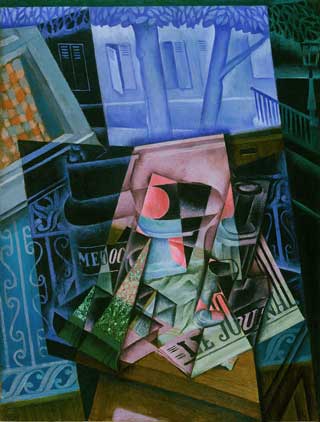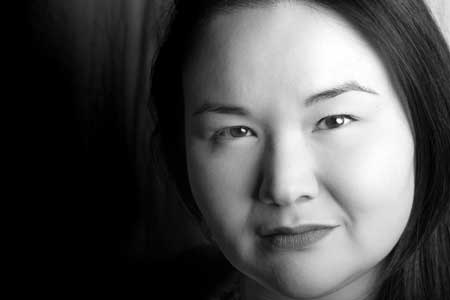Concert
Compositions by John McDonald, Julia Soojin Cavallaro, Adam Simon, Francis Poulenc, Joaquin Nin, Franz Schubert
John McDonald, piano; composer
Julia Soojin Cavallaro, mezzo-soprano, composer
Philipp Stäudlin, saxophone
Distler Performance Hall
Granoff Music Center, Tufts University
Medford, MA
February 3, 2019, 3:00pm
Six Word Stories, Op. 640
Oh What You Do To Me, Op. 653
Sevens, OR: Another Day In The Music Office, Op. 646
Julia Cavallaro, mezzo-soprano; John McDonald, piano
Julia Cavallaro
Dislocation (2018)
John McDonald, piano
John McDonald
Thoughts On Isaiah’s Work Life, Op. 638, No. 53
John McDonald, piano
Julia Cavallaro
Speak To Speak (2018)
Julia Cavallaro, mezzo-soprano; John McDonald, piano
Adam Simon
Manic Nocturne (2018)
Julia Cavallaro, mezzo-soprano; John McDonald, piano
Francis Poulenc (1899-1963)
Le Travail du peintre (1956)
Julia Cavallaro, mezzo-soprano; John McDonald, piano
Julia Cavallaro
La Poésie de la peinture (2019)
Julia Cavallaro, mezzo-soprano; John McDonald, piano; Philipp Stäudlin, saxophone
Joaquin Nin (1879-1949)
Le Chant du veilleur (1933)
Julia Cavallaro, mezzo-soprano; John McDonald, piano; Philipp Stäudlin, saxophone
Franz Schubert (1797-1828)
Nacht und Träume
Julia Cavallaro, mezzo-soprano; John McDonald, piano
John McDonald
P.S. for P.S., After F.P.S. (Night and Dreams), Op. 570
Julia Cavallaro, mezzo-soprano; John McDonald, piano; Philipp Stäudlin, saxophone

Still Life before an Open Window, Place Ravignan (1915)
Philadelphia Museum of Art
What an incredible treat this performance was, with multiple compositions by John McDonald, Professor of Music and Composer in Residence at Tufts University, by Julia Cavallaro, and with a lovely single addition by Adam Simon. Works by Francis Poulenc, Joaquin Nin, and Franz Schubert filled out the richly adorned program.
Many quite brief compositions filled this extraordinarily fun, interesting and inspired concert. Some of them were only a minute or two, but overall they conveyed a sense of dynamic contemporary composers wrestling with the tensions between tonality and its alternative, and between the sensation of punctuated ferocity and that of atmospheric soundscapes.

McDonald explained that the idea of the Work and Life theme came from dealings with the university service staff, and from his own work as an academic on the Tufts Work/Life committee. What a wonderful inspiration for a concert this is, representing sensitivities to the most down-to-earth and immediate problems, and offering responses of the most distinctively aesthetic sort.
McDonald’s Sevens: OR: Another Day In The Music Office was a lovely recognition of this down-to-earthness, but couched in a complex palette of colors that made one almost see the light streaming into that office. Punctuated references to the ordinary – like order food or out screen! peppered the composition that maintained its balance of atmospheric and punctuated sensibilities throughout.
Julia Cavallaro’s Speak To Speak is a wonderful, Dadaistic poem with the phrase speak to speak repeated in a variety of combinations that would make Gertrude Stein swoon. It was indeed repeatedly accentuated, but also intoxicating in its chant-like insistence on turning this nearly meaningless phrase into something worthy of a sound pedestal.
Transmitting these pieces throughout were the superb talents of both McDonald on the piano and Cavallaro as singer. McDonald has wonderful poise and ease at the keyboard while transmitting a decisive energy and precision. Cavallaro’s voice is rich and penetrating. It’s notable that both of these interesting and inventive composers are also such gifted performers.
John McDonald’s Thoughts on Isaiah’s Work Life is, as well, both insistently energetic and infused by peaceful vistas. How well that contrast of the maniacal dance, almost Philip Glass-like in its parade of constancy, modulates into rolling hills of notes surrounded by the emerging light of the gradually appearing vistas.
Adam Simon’s Manic Nocturne offers a hilarious concept – one can almost watch the sheep doing a rumba as they try to fly over the fence – but sweetly engaging as it unfolds with its dark and quiet Chopinish elements. Cinematic and dramatic themes reveal new vistas, with Cavallaro’s voice like a spatial enhancement, quietly moody and reflective.
Francis Poulenc’s collection of short pieces devoted to various notable artists of the Modernist movement of the first part of the twentieth century provided a traditional interlude. Sections devoted to Pablo Picasso, Marc Chagall, Georges Braque, Juan Gris, Paul Klee, Joan Miro and Jacques Villon evoked quite uniquely and tonally the sense of each of these great painters, with beautiful renditions of the tonal poems offered to them sung by Cavallaro, with expert accompaniment by McDonald.

Photo: Reza Hosseini
The Poulenc was, however, really a preparation of sorts for La Poésie de la Peinture, the new work Cavallaro composed as a tribute to her artist father, and which was inspired to some extent by Poulenc’s work. Two of the three sections in the piece, devoted to van Gogh’s A Starry Night and Cezanne’s Les Grandes Baigneuses were beautifully rendered by McDonald, Cavallaro, and by the superb saxophonist Philipp Stäudlin who joined in for the second part of the program. Stäudlin’s plaintive, yearning, searching saxophone part added an airily poignant dimension to the piece.
Works by Joaquin Nin and Franz Schubert anticipated the final composition by McDonald, a direct takeoff on the Schubert piece with the wonderful title P.S. For P.S., After R.P.S. (Night and Dreams) which evokes both the lovely Romantic undertones and the searchingly contemporary overtones that prevailed. One might spend time figuring out the semiotics of all of the references, but suffice it to say that the harmonic combinations of McDonald’s and Stäudlin’s playing and of Cavallaro’s singing gave an inspired and elevated conclusion to this delightful, poignantly playful, and fulfilling concert.
Brief Notes on the Pieces
McDonald, John Severn, OR
Open office – one can almost feel light pour in. Order food – urgent. Out Screen! Then legato. The interplay of short energetic bursts interleaved with almost tuneful elongations of line. Sweet lyricism with ordinary settings and sharply synaptic interludes, like quantum bursts.
Julia Cavallaro Dislocation
Slow, searching, haunting. Regular plodding patter, then a deep run. Other deeper repeated chords. Arms leaning over keys, leading to a crashing near the end, a tonal explosion.
John McDonald Thoughts on Isaiah’s Work Life
Very insistent, energetic and tonal with repetition a la Glass but modulated more. Rolling hills of notes followed by peaceful vistas.
Julia Cavallaro Speak to Speak
Has a dadaist element, but also a quiet Romanticism. Done is done – quietude and resolve.
Adam Simon Manic Nocturne
Begins a la Chopin, but darker and quieter. Cinematic and dramatic. Cavallaro’s voice like a spatial component, quietly moody and reflective.
Francis Poulenc Le Travail du peintre
Picasso: heavy, deep, pronounced, determined, plaintive, desirous, darkly Hispanic. Ends with a cry.
Chagall: Flying all over. Fanciful. French and impressionistic. Almost like a discordant ballad, ending quixotically.
Braque: Almost Debussy-like, with a light and high finale.
Gris: Darkly minor, longing, with broadly solid planes.
Klee: Robustly rumbling, with building urges, almost Wagnerian.
Miro: Broadly lyrical.
Villon: Stark, formal, but in respects like a cabaret ballad. A sharp ray of chord at end like a gleam of light.
Julia Cavallaro La Poésie de la peinture
Starry Night: yearning, searching sax. High sax and voice sharing notes, like entwined souls.
Grandes Baigneuses: Dreamily atmospheric.
Joaquin Nin Le chant de veilleur
Almost a Hebraic quality infuses the impressionistic landscape. Lovely interplay between mezzo and sax, with sweetly peaceful ending.
Franz Schubert, Nacht und Träume
Groping, appealing: how does one go it alone?
John McDonald P.S. for P.S., After F.P.S. (Night and Dreams)
Long held high sax note, like a beacon right into the Schubert which inspired the piece. The play of a flashlight going everywhere. The sax claims freedom, asking how to find one’s way out of the cave? It appeals to one to be oneself, offers a long, slow prayer in service of that idea, and then ends surprisingly, quickly questioning all.
– BADMan
Leave a Reply